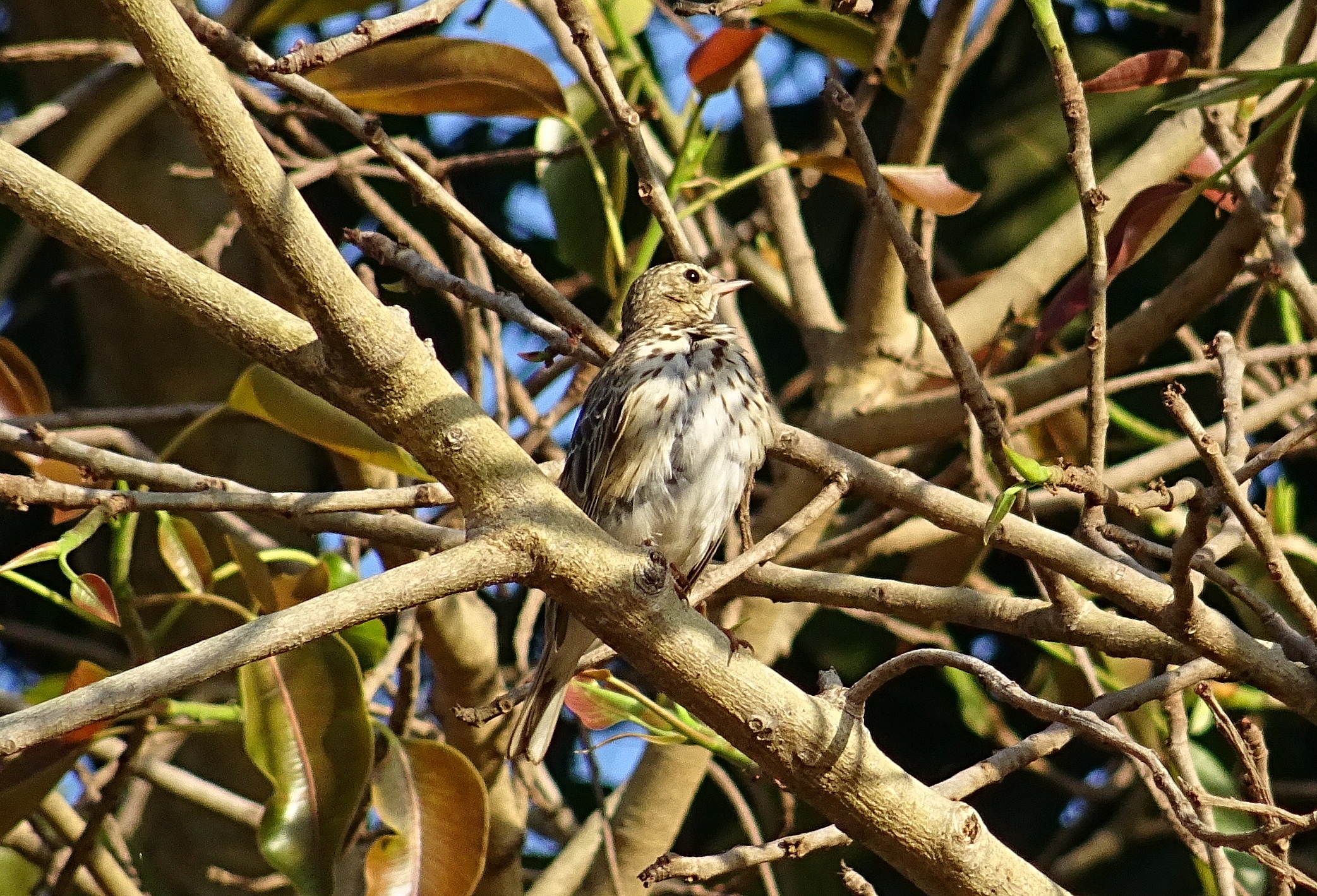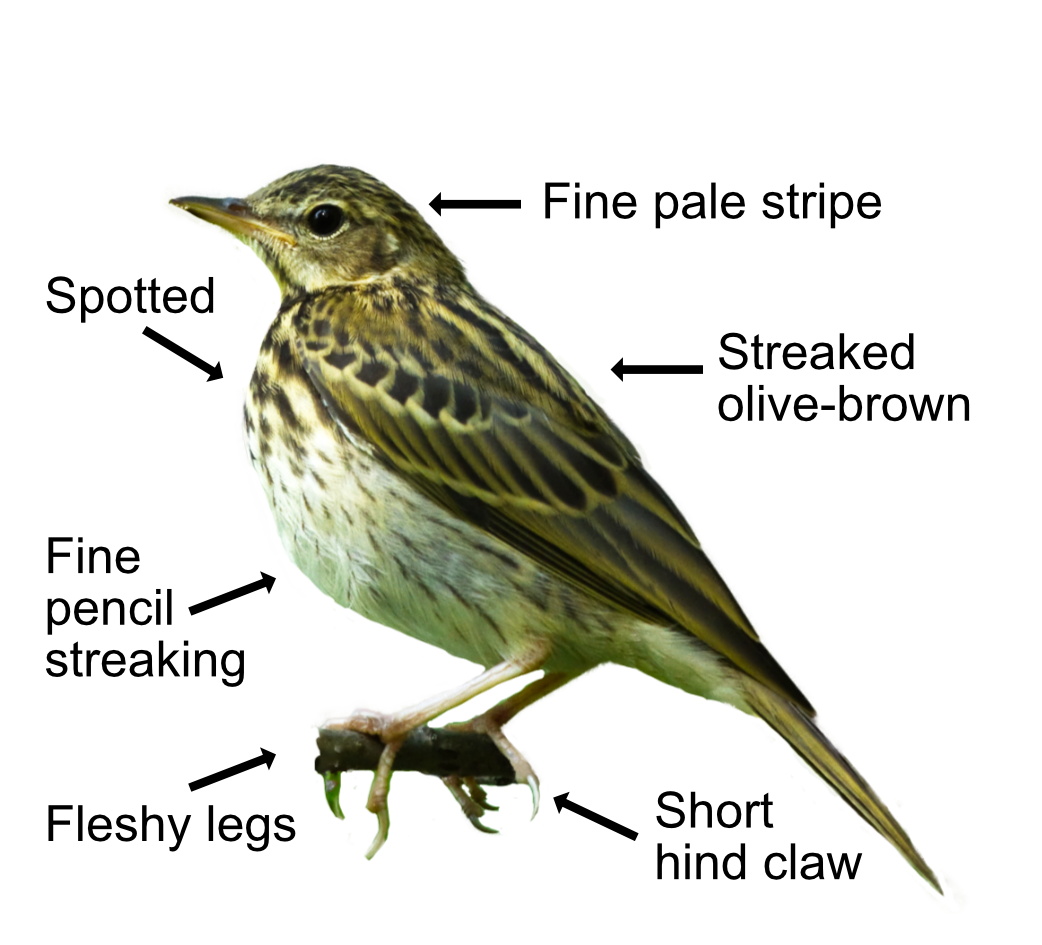
The trouble with woodland birds is that most are tiny. The Tree Pipit being a good example. A classic little brown job. Despite his tiny size, his enthusiastic and exuberant song soon gets your attention. A cousin of the Meadow Pipit, who lives in the countryside, the Tree Pipit struts his stuff at the woodland edge and in wooded glades. He uses trees for his song flight, spiralling up and then parachuting down with wings raised and tail spread down to land back on a branch. Unlike his meadow cousin, he overwinters on the African savanna and only visits here between April and September.
Tree Pipits are very similar to Meadow Pipits but can be distinguished by their heavier bill, shorter hind claw and finer streaking on their flanks. They have a streaked olive brown back, a yellowy breast with heavy spotting, noticeably fine 'pencil' streaks on their sides, a white belly, and flesh-coloured legs. Their tail is longish and there is a pale stripe over the eye. The Tree Pipit's song is a series of trills ending with "seea-seea-seea" like they are really having fun. Their normal call is a harsh "teez". One way to remember the call of a Tree Pipit is to imagine it is buzzing its name "treeeeee".

Tree Pipits eat mainly insects like beetles, weevils, ants, and spiders. They will eat the occasional berry or seed in autumn. They generally feed on the ground. If disturbed, they will take off steeply and circle round until it is safe to land again.
They breed on heaths and grasslands or newly felled forestry areas. The female makes a nest in a depression on the ground amongst low cover. She lays 2-6 eggs and incubates them on her own until they hatch 12 days later. Both parents feed the chicks for 12 days, who will leave the nest even before they are able to fly. There are occasionally two broods, usually when the first has failed. The parents do their moult between June and September once they have finished raising a family and are getting ready to go back to Africa.
The Tree Pipit is a scarce summer migrant with 90,000 pairs found mainly in Central and Southern England and in Scotland. Numbers are falling in England though increasing in Scotland. The decline is unclear but may be because of increased grazing in woods and on heaths.
Their Latin name is 'anthus trivialis' where 'anthus' is the name for a small bird of the grasslands and 'trivialis' means 'common' from 'trivium' for 'public street'. It is from where we get the word 'trivial'. The Tree Pipit is certainly not trivial and, sadly, not all that common either.